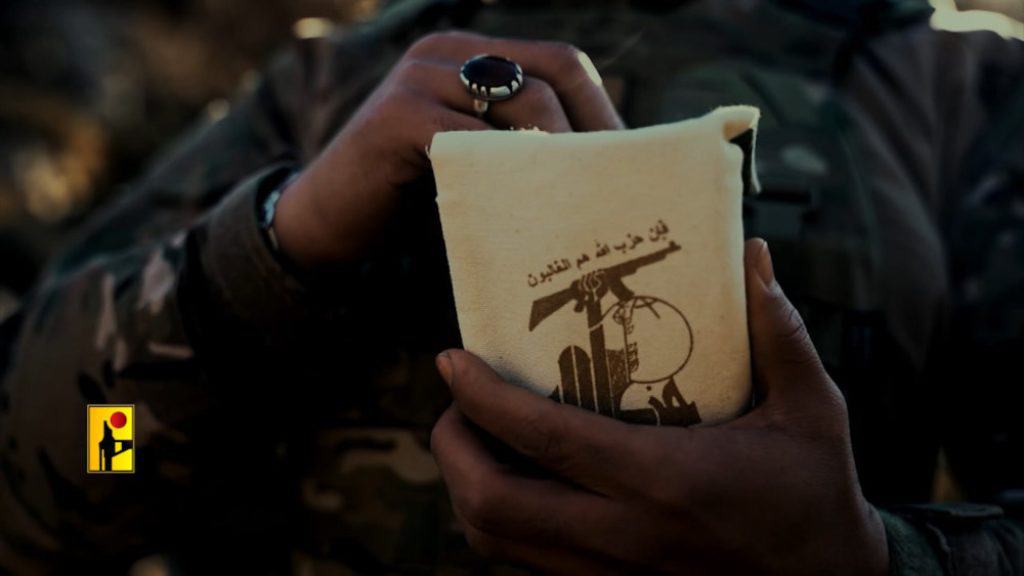
This article was originally published on Long War Journal. You can read the original article HERE

On Monday, the Israel Defense Forces (IDF) announced carrying out airstrikes against targets belonging to Hezbollah’s intelligence apparatus in Syria.
“A short while ago, the IAF conducted an aerial operation and struck Hezbollah terror targets belonging to Hezbollah’s intelligence headquarters in Syria. This is Hezbollah’s central intelligence body, responsible for intelligence assessments, the direction of intelligence activities, and the intelligence gathering and detection capabilities,” said the IDF.
In a terse statement, Syrian state-controlled media reported Israeli airstrikes south of Damascus but did not provide details on the attack.
“Nearly at 18:05 today, the Israeli enemy launched an aerial aggression from the direction of occupied Syrian Golan, targeting a number of sites south of Damascus, causing some material damages in the places,” reported the Syrian Arab News Agency (SANA).
The IDF detailed that the Syrian branch of the Hezbollah headquarters has an “independent intelligence gathering, coordination, and assessment network.”
Separately, the IDF killed Hezbollah’s head of intelligence, Hassan al-Zaima, along with top Hezbollah cleric Hashem Safieddine in a Beirut airstrike in early October, the IDF noted.
Furthermore, the Israeli military said it eliminated the head of Hezbollah’s intelligence branch in Syria, Mahmoud Shaheen, in the strike that killed Safieddine and al-Zaima. The IDF detailed Shaheen’s various roles within Hezbollah’s ranks.
“Within the intelligence headquarters, he [Shaheen] assumed the role of Head of the Syrian branch in 2007. Over the years, he gained experience and established close working relations with the Syrian regime and Iranian-aligned officials. In his role, he led the development and deployment of intelligence and air defense capabilities in coordination with various parts of the Iranian axis. Shaheen was a significant figure in regional collaboration, and his elimination constitutes a further degradation of Hezbollah’s intelligence capabilities,” stated the IDF.
Israel’s strategy
Israel is employing a similar military strategy against Hezbollah that it has been using on Palestinian terrorist groups in Gaza: Severely degrade the capabilities of its foes by eliminating key figures and infrastructure.
Hobbling a terrorist organization does not necessarily mean Israel must eliminate every fighter and all infrastructure belonging to the group. Much like a vehicle, if critical parts are rendered inoperable, such as a wheel or an engine, the car is disabled. In the case of Hezbollah, Israel has carried out a campaign to incur a severe blow against its leadership, military commanders, financial network, and infrastructure. Striking these key sectors with great success creates instability and significantly weakens the group—which Israel has done in a short period and continues to do.
Israel’s successful execution of this strategy has erased almost all the leverage Hezbollah had over the Jewish state during the first 11 months of the war. Now, despite Hezbollah’s persistent projectile fire against northern Israel, it is attacking from a weakened position. Hezbollah’s diminishment creates leverage for Israel to compel the Lebanese-based group to agree to a ceasefire without the precondition of halting the war in Gaza.
However, Hezbollah will put its interests before Lebanon, and the group may choose not to agree to a ceasefire despite the worsening of conditions for citizens in areas affected by the war.
This article was originally published by Long War Journal. We only curate news from sources that align with the core values of our intended conservative audience. If you like the news you read here we encourage you to utilize the original sources for even more great news and opinions you can trust!










Comments